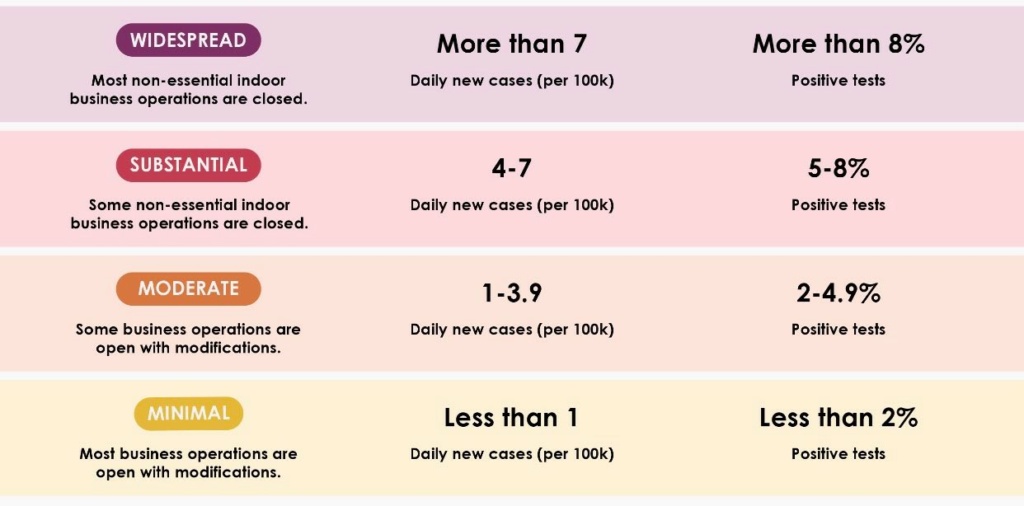New (and Stricter) COVID-19 Rules Implemented By Cal/OSHA – Employers Should Act Now
Published: December 3, 2020
On November 30, 2020, the California Division of Occupational Safety and Health’s (“Cal/OSHA”) Emergency COVID-19 Prevention Regulation went into effect. The regulations apply to all employers, employees, and to all places of employment with three exceptions: (1) workplaces where there is only one employee who does not have contact with other people; (2) employees who are working from home; and (3) employees who are covered by the Aerosol Transmissible Diseases regulation.
The emergency regulations provide additional requirements on employers in light of the COVID-19 pandemic in the following areas: COVID-19 prevention, the handling of COVID-19 infections and COVID-19 outbreaks (including major outbreaks), COVID-19 prevention in employer-provided housing, and COVID-19 prevention in employer-provided transportation to and from work. Employers should review the regulations in detail to understand how their own workplace might be affected. Among the issues addressed by the emergency regulations, are the following:
- Employers must adopt a written COVID-19 Prevention Program containing the following information:
- Communication to employees about the employer’s COVID-19 prevention procedures
- Identify, evaluate and correct COVID-19 hazards
- Physical distancing of at least six feet unless it is not possible
- Use of face coverings
- Use engineering controls, administrative controls and personal protective equipment as required to reduce transmission risk
- Procedures to investigate and respond to COVID-19 cases in the workplace
- Provide COVID-19 training to employees
- Provide testing to employees who are exposed to a COVID-19 case, and in the case of multiple infections or a major outbreak, implement regular workplace testing for employees in the exposed work areas
- Exclusion of COVID-19 cases and exposed employees from the workplace until they are no longer an infection risk
- Maintain records of COVID-19 cases and report serious illnesses and multiple cases to Cal/OSHA and the local health department, as required
- Guidance on dealing with employees who are COVID-19 positive, or who have been exposed to the illness. Specifically, employers are directed to exclude COVID-19-positive employees and those who have been exposed to COVID-19 from the workplace. If the employee is able and available to work, the employer must continue to provide the employee’s pay and benefits, unless the employer can establish the employee’s exposure was not work-related. The employer may require the employee to exhaust paid sick leave benefits before providing exclusion pay, and may offset payments by the amount an employee receives in other benefit payments.
- Specific guidance on what additional actions employers must take amidst a major COVID-19 outbreak, which is defined as a covered workplace that has 20 or more COVID-19 cases within a 30 day-period.
Employers can find more information on the Cal/OSHA COVID-19 Guidance and Resources website here, (link https://www.dir.ca.gov/DIRNews/2020/2020-99.html. In addition, FAQ’s on the emergency regulations can be found here (link https://www.dir.ca.gov/dosh/coronavirus/COVID19FAQs.html).
These emergency regulations are now in effect. Employers should immediately review their Cal/OSHA COVID-19 Prevention Plans to ensure compliance with the new regulation. In many cases, employers will need to revise and update their plans, and payroll procedures previously implemented, in order to comply with these new emergency regulations.
The Labor and Employment attorneys at Weintraub Tobin continue to wish you and your family good health during these challenging times. If we can assist you in any of your employment law needs, feel free to reach out to us.



